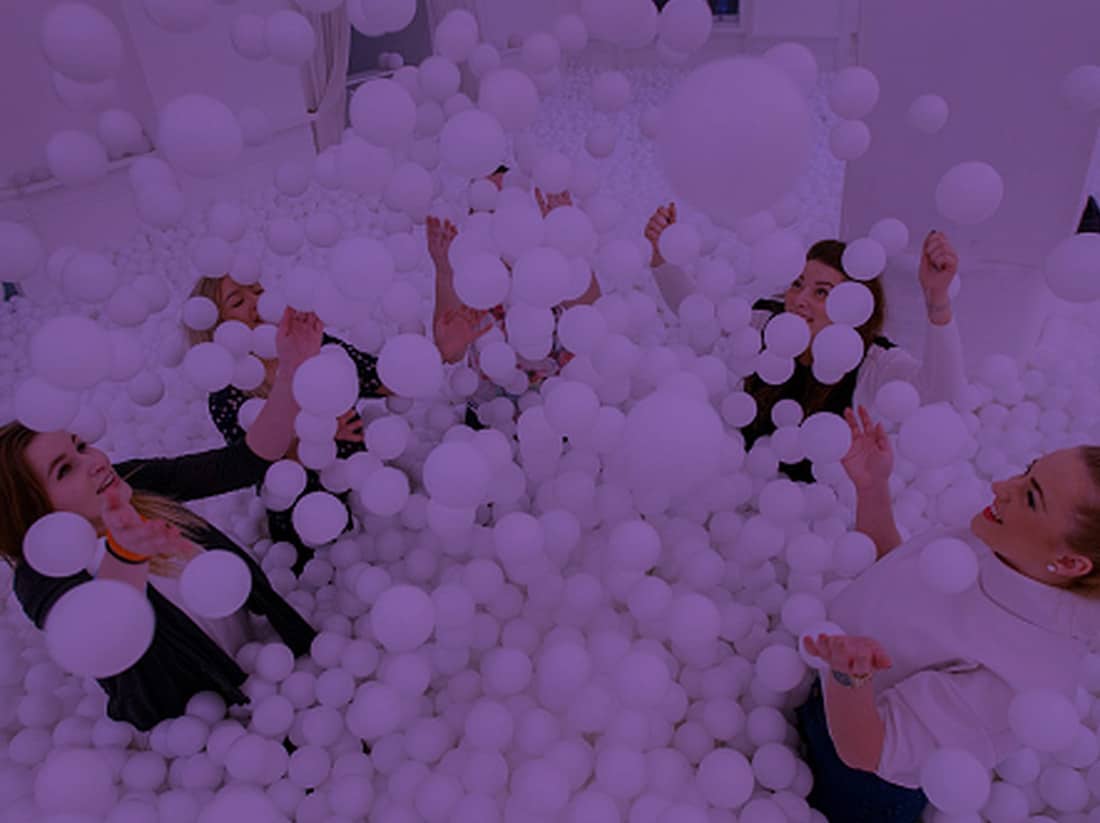
Does Your Conference Brand Have Balls?
Written by Katie Hansen
Conferences present a ball pit of topics, products, programs, services, speakers, communities, sponsors, campaigns and themes. When exposed to independently, these parts don’t provide meaning – just a hollow and forgettable moment in time. Successful conference brands expertly configure the sum of all these parts – creating an immersive, stimulating and colorful experience. An experience you can’t wait to jump into.
I have never met anyone, EVER – that has attended any conference, expo or event (including SXSW) solely based on a logo, theme, brochure, email, speaker, product or host company. Great live events are brought to life by the calculated and creative integration of many components – building a brand system from the inside out to deliver value-driven, unique and memorable experiences for all audiences.
Since the onset of the internet, professional and trade associations have been faced with numerous competitive forces that threaten their ability to stay relevant and grow. Access to an abundance of industry knowledge exists with a mere click or two. The same goes for access to professional connections and industry-based services. Furthermore, many industries are seeing a proliferation of live events hosted by for-profit entities – big brands with deep pockets, celebrity spokespeople and an aspirational image.
Many associations remain dependent on their annual conferences and trade expos to bring their community together and serve as a primary revenue stream. And many of these same associations have been largely disappointed with trends in audience participation over the past several years.
Why? Adversity to change. The dirty word “change”. I know many organizations, companies and associations have begun to change as they have had no choice. But let’s be honest – many hate it, resist it and ultimately take too long to initiate it.
Here are some assumptions about change we have heard at the board room table:
- Backlash from legacy members
- Resistance from tenured staff and board members
- Confusion in the market/membership
What does change mean:
change |CHānj| ~verb
1. make or become different
How can you embrace and leverage change to boost your conference brand? Our suggestion is to stop thinking, saying and using the word “change” and replace it with the concept of “design.”
Design with a big D that is.
What does design mean:
design |dəˈzīn| ~verb
1. do or plan (something) with a specific purpose or intention in mind
In Marty Neumeier’s book, The Designful Company, it reads “Design is rapidly moving from “posters and toasters” to include processes, systems and organizations.” If you haven’t read the book, I encourage you to. Embracing a mindset shift from change to design will help your organization empathize with your audiences and move into a problem-solving mode. You’ll open doors you never knew existed and meet customer needs in ways no other provider can. If done right, it can be an enthralling process that stimulates cross-functional teams, elicits innovation from creative introverts and mobilizes an entire staff around a central mission.
At Mekanic, as much as we enjoy reading books on positive change and change management – we recognize that most of the world cringes at the thought. And we can respect that. We encourage you to design your live event brand – not change it just for the sake of change. Design the core purpose and promise, design the marketing strategy, design the brand identity, and design the customer experience. And most importantly, don’t design to benefit your organization first. Design to serve your customers, members and constituents. Better yet, involve them in the process to co-create your conference brand and build a buzzworthy ball pit worth jumping into year after year.